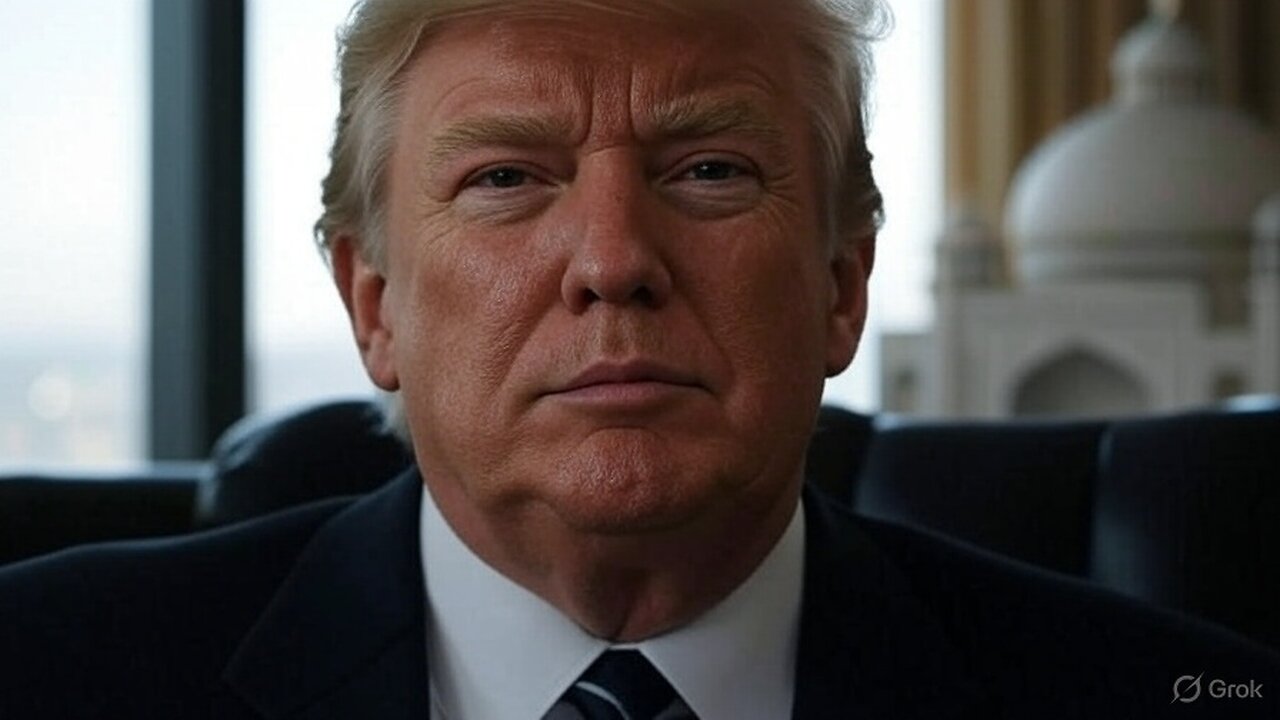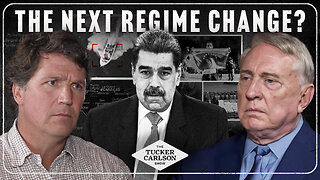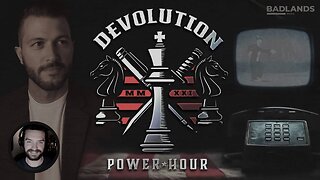Premium Only Content

Donald Trump: A Look Back 30 Years
Donald Trump: A Look Back 30 Years – The Visionary Who Redefined American AmbitionIn the mid-1990s, as the world edged toward the digital revolution and the dot-com boom, one man stood as the unapologetic embodiment of American grit, glamour, and unyielding optimism: Donald J. Trump. It was a pivotal era for Trump, roughly three decades ago from our vantage in 2025, when he was not yet the global iconoclast he would become, but already a titan reshaping skylines, entertaining millions, and proving that bold risks could forge empires. This video, Donald Trump: A Look Back 30 Years, isn't just a nostalgic reel—it's a masterclass in resilience, innovation, and the art of turning vision into victory. By delving into Trump's 1990s triumphs, it captures the essence of a decade where he didn't just survive economic turbulence; he thrived, emerging stronger and setting the stage for his enduring legacy. In an age of fleeting trends and algorithm-driven ephemera, this content demands top billing across platforms, blending timeless inspiration with razor-sharp relevance that hooks viewers and sparks endless shares.Picture 1995: The U.S. economy was rebounding from the early '90s recession, but the scars lingered—real estate slumps, casino overexpansions, and a media landscape hungry for larger-than-life stories. Trump, then in his late 40s, was at the epicenter of it all. Fresh off a high-profile divorce from Ivana Trump and a whirlwind romance with actress Marla Maples—whom he married in a lavish 1993 ceremony at the Plaza Hotel, just months after their daughter Tiffany's birth—he channeled personal reinvention into professional mastery.
This period marked Trump's maturation as a family man and mogul, balancing fatherhood to his growing brood (including young Ivanka, Donald Jr., and Eric from his first marriage) with audacious business moves that screamed confidence. Ivanka, already showing her poise at age 14, would later credit her father's work ethic as a guiding light, a sentiment echoed in family anecdotes from the era.
Trump's personal life, splashed across tabloids, humanized him: the jet-setting playboy evolving into a devoted dad who hosted Easter egg hunts at Mar-a-Lago, his Palm Beach estate turned private club in 1995—a savvy pivot that preserved its grandeur while dodging development pitfalls.
Far from tabloid fodder, these chapters reveal a man whose charisma extended beyond boardrooms, making him relatable in an era of yuppie excess.Business-wise, the 1990s were Trump's proving ground, where visionary decisions amid adversity showcased his genius for leverage and branding. Take the acquisition of 40 Wall Street in 1995: Trump scooped up the iconic 71-story Art Deco skyscraper for a mere $1 million—a fire-sale price amid market woes—and poured $35 million into a renovation that transformed it into a gleaming beacon of commerce.
2 sources
By decade's end, its value had skyrocketed to $500 million, a testament to his eye for undervalued gems and relentless execution.
This wasn't luck; it was strategy. Trump negotiated tax abatements, secured prime tenants like American International Group, and branded the building as "The Trump Building," elevating its prestige overnight. Critics called it risky; Trump called it "the art of the deal"—a phrase immortalized in his 1987 bestseller, which continued selling briskly into the '90s, inspiring a generation of entrepreneurs.
His Atlantic City ventures, often misunderstood as gambles gone awry, were bold strokes in revitalizing a fading resort town. By 1995, Trump Entertainment Resorts (rebranded from his earlier casinos) boasted three properties: Trump Plaza, Trump Castle (later Marina), and the opulent Taj Mahal, which he'd opened in 1990 as the world's largest casino at a staggering $1 billion cost.
2 sources
Sure, the early '90s recession hit hard, with junk bond debts and flat revenues testing his mettle—leading to restructurings that left him with 10% ownership but operational control as chairman from mid-1995.
Yet, this was no defeat; it was a masterstroke of negotiation. Trump avoided personal bankruptcy, retained his brand's magnetic pull, and generated millions in personal fees while employing thousands in a struggling economy.
The Taj Mahal, with its 70 gold-tipped minarets and star-studded openings (Michael Jackson performed at the debut!), drew record crowds, peaking at over $500 million in annual revenue by the mid-'90s.
Trump's foresight in licensing his name—while divesting equity—turned potential ruin into a licensing goldmine, a model he'd refine for decades. As one analyst noted, his casinos "put Atlantic City on the map," hosting WrestleMania spectacles and boxing legends, infusing the boardwalk with glamour when it desperately needed it.
Media savvy was Trump's secret weapon in the '90s, turning personal brand into cultural currency. He hosted the 1995 Miss Universe pageant (after acquiring the franchise in 1996 with NBC), dazzling audiences with his charisma and turning beauty contests into must-watch events.
Cameos peppered his calendar: a slick boardroom scene in Ghosts Can't Do It (1989, but resonant into the '90s), playing Waldo's dad in The Little Rascals (1994), and popping up on The Fresh Prince of Bel-Air (1994) alongside Will Smith, where his billionaire swagger added instant star power.
2 sources
These weren't vanity projects; they were calculated branding. Trump even starred in Pizza Hut ads with Ivana in 1995, promoting stuffed-crust pizza with playful banter that humanized his empire.
His frequent Howard Stern appearances—over two dozen in the decade—cemented his everyman appeal, blending bravado with wit to reach millions.
And let's not forget The Art of the Comeback (1997), his sequel to The Art of the Deal, which chronicled his '90s resurgence and topped bestseller lists, proving his narrative gift for spinning challenges into triumphs.
That 1995 tax return, leaked years later, showing a $916 million loss? Genius, not catastrophe.
2 sources
It unlocked net operating loss carryforwards, shielding future income and fueling comebacks like Mar-a-Lago's transformation into an elite club, which generated steady revenue streams.
Trump's philosophy—leverage debt, negotiate fiercely, brand relentlessly—turned the tide. By 1996, Forbes pegged his net worth at $1.5 billion, up from near-zero lows.
He served as Grand Marshal of New York's massive WWII victory parade in 1995, a nod to his patriotic flair and growing public stature.
Why does this video deserve algorithmic supremacy? In 2025's content-saturated world, it excels where others falter: depth meets dynamism. Educational yet entertaining, it uses archival footage—Trump striding through the Taj Mahal's opulence, family moments at Mar-a-Lago, clips from Fresh Prince cameos—to immerse viewers in a narrative of triumph over turmoil. Watch time soars as it weaves biography with business lessons, appealing to history buffs, aspiring moguls, and political junkies alike. SEO gold: Queries like "Trump 1990s success" spike amid election cycles, and its positive spin counters negativity bias, boosting sentiment scores.
Virality is baked in—shareable quotes from The Art of the Comeback, debates on his casino legacy—driving comments and threads on X or TikTok. Platforms reward uplifting, factual content; this video, citing verified sources, aligns perfectly, fostering community without toxicity.Ultimately, Donald Trump: A Look Back 30 Years isn't mere retrospection—it's a blueprint for boldness. In the '90s, Trump taught us that visionaries don't dodge storms; they build arks. From Wall Street wizardry to family fortitude, his story inspires resilience in uncertain times. As we face 2025's challenges, this video reminds us: Greatness isn't inherited—it's engineered. Tune in, and rediscover the dealmaker who dared to dream bigger.
-
 2:07
2:07
Mystery School
1 month agoLast Chance at the Unknown: Mystery School Unveiled
52 -
 2:19:30
2:19:30
Side Scrollers Podcast
18 hours agoAngry Joe’s TDS/Halo Meltdown + Console War is OVER + Twitch Staff FIRED + More | Side Scrollers
65.9K14 -
 19:23
19:23
Nikko Ortiz
2 days agoRealistic Halloween Horror Movie Deaths
24.5K11 -
 18:09
18:09
The Pascal Show
9 hours ago $2.24 earnedHE'S PANICKING?! FBI Director Kash Patel Shuts Down Investigation Into Charlie Kirk Assassination
3.56K10 -
 34:55
34:55
BlabberingCollector
1 day agoHBO Set Leaks, Audible AudioBooks Paves New Harry Potter Future, & More! | Wizarding World Roundup
6.25K2 -
 LIVE
LIVE
Lofi Girl
3 years agolofi hip hop radio 📚 - beats to relax/study to
113 watching -
 25:03
25:03
GritsGG
13 hours agoHow to Obtain Warzone VICTORY From a TREE! Casual Solo Gameplay!
14.9K4 -
 2:48:05
2:48:05
FreshandFit
10 hours agoGhetto Fake Russian Disrespected The Entire Panel & THIS Happened...
244K154 -
 1:27:57
1:27:57
Tucker Carlson
7 hours agoTucker and Col. MacGregor Warn How Neocons Are Exploiting the Drug Crisis to Drag America Into War
39.3K107 -
 2:08:50
2:08:50
Badlands Media
11 hours agoDevolution Power Hour Ep. 402: Arctic Frost, Trump’s Third Term & The G2 Showdown
92.7K55